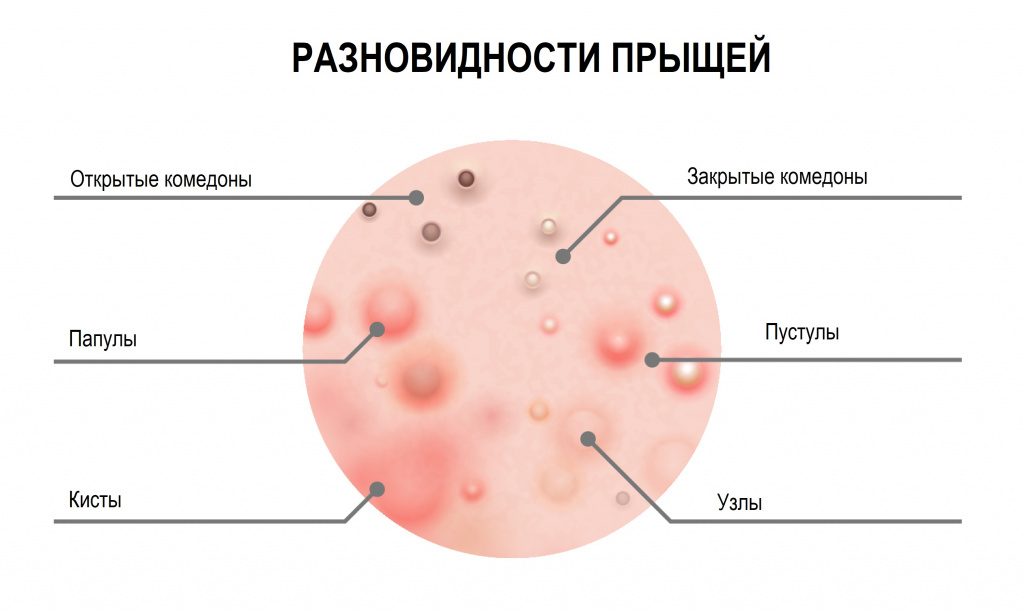
Acne
Acne Overview
Acne is a common skin condition that occurs when the hair follicles under the skin become clogged. Sebum — an oil that helps prevent skin from drying out — and dead skin cells clog pores, leading to flare-ups of lesions commonly referred to as pimples or pimples. Most often, rashes occur on the face, but can also appear on the back, chest, and shoulders.
Acne is an inflammatory skin condition that has sebaceous (oil) glands that connect to the hair follicle containing fine hairs. In healthy skin, the sebaceous glands produce sebum, which comes to the surface of the skin through the pores, which are the opening in the follicle. Keratinocytes, a type of skin cell, line the follicle. Normally, when the body sheds skin cells, keratinocytes rise to the surface of the skin. When someone has acne, hair, sebum, and keratinocytes stick together inside the pore. This prevents keratinocytes from shedding and prevents sebum from reaching the skin surface. The mixture of oil and cells allows bacteria that normally lives on the skin to grow in clogged follicles and cause inflammation—swelling, redness, heat, and pain. When the wall of the clogged follicle breaks down, bacteria, skin cells, and sebum are released onto the nearby skin, creating breakouts or pimples.
For most people, acne disappears by the age of thirty, but for some people in their forties and fifties, this skin problem persists.
Who gets acne?
Acne occurs in people of all races and ages, but is most common in teenagers and young adults. When acne appears during adolescence, it is more common in men. Acne can continue into adulthood, and when it does, it is more common in women.
Types of Acne
Acne causes several types of lesions or pimples. Doctors call enlarged or clogged hair follicles comedones. Acne types include:
- Whiteheads: Plugged hair follicles that remain under the skin and form a white bump.
- Blackheads: clogged follicles that reach the surface of the skin and open up. On the surface of the skin, they look black because the air is bleaching the sebum, not because they are dirty.
- Papules: Inflamed lesions that usually look like small pink bumps on the skin and may be tender to the touch.
- Pustules or pimples: papules covered with white or yellow purulent lesions that may be red at the base.
- Nodules: Large, painful, firm lesions deep in the skin.
- Severe nodular acne (sometimes called cystic acne): Deep, painful, pus-filled lesions.
Acne causes
Doctors and researchers believe that one or more of the following factors may lead to the development of acne:
- Excess or high production of oil in the pores.
- Accumulation of dead skin cells in pores.
- Growth of bacteria in the pores.
The following factors may increase your risk of developing acne:
- Hormones. Increased levels of androgens, the male sex hormones, can lead to acne. They increase in both boys and girls, usually around puberty, and cause the sebaceous glands to enlarge and produce more sebum. Hormonal changes associated with pregnancy can also cause acne.
- Family history. Researchers believe you may be more likely to get acne if your parents had acne.
- Medications. Certain medications, such as those containing hormones, corticosteroids, and lithium, can cause acne.
- Age. Acne can occur in people of all ages, but is most common in teenagers.
The following do not cause acne, but may make it worse.
- Diet. Some studies show that eating certain foods can worsen acne. Researchers continue to study the role of diet as a cause of acne.
- Stress.
- Pressure from sports helmets, tight clothing or backpacks.
- Environmental irritants such as pollution and high humidity.
- Squeezing or picking spots.
- Scrubs the skin too much.
Leave a Reply